Center for Disease Control
Schools can offer a critical lifeline for students facing trauma
New trend data from CDC’s Youth Risk Behavior Survey (YRBS) reveal that teen girls and teens who identify as lesbian, gay, bisexual, and questioning (LGBQ+) are experiencing extremely high levels of mental distress, violence, and substance use. With the right programs and services in place, schools have the unique ability to help students thrive.
Collected in the fall of 2021, these data represent the first YRBS data collected since the start of the COVID-19 pandemic. CDC’s Youth Risk Behavior Surveillance System is the largest public health surveillance system in the United States. It has monitored multiple health-related behaviors among high school students since 1991. YRBS data are a critical first step to revealing, understanding, and addressing emerging threats to the health and well-being of the nation’s youth.
Teen Girls
According to the data, teen girls are confronting the highest levels of sexual violence, sadness, and hopelessness they have ever reported to YRBS.
Almost 1 in 5 teen girls experienced sexual violence in the past year—a 20% increase since 2017.[1]
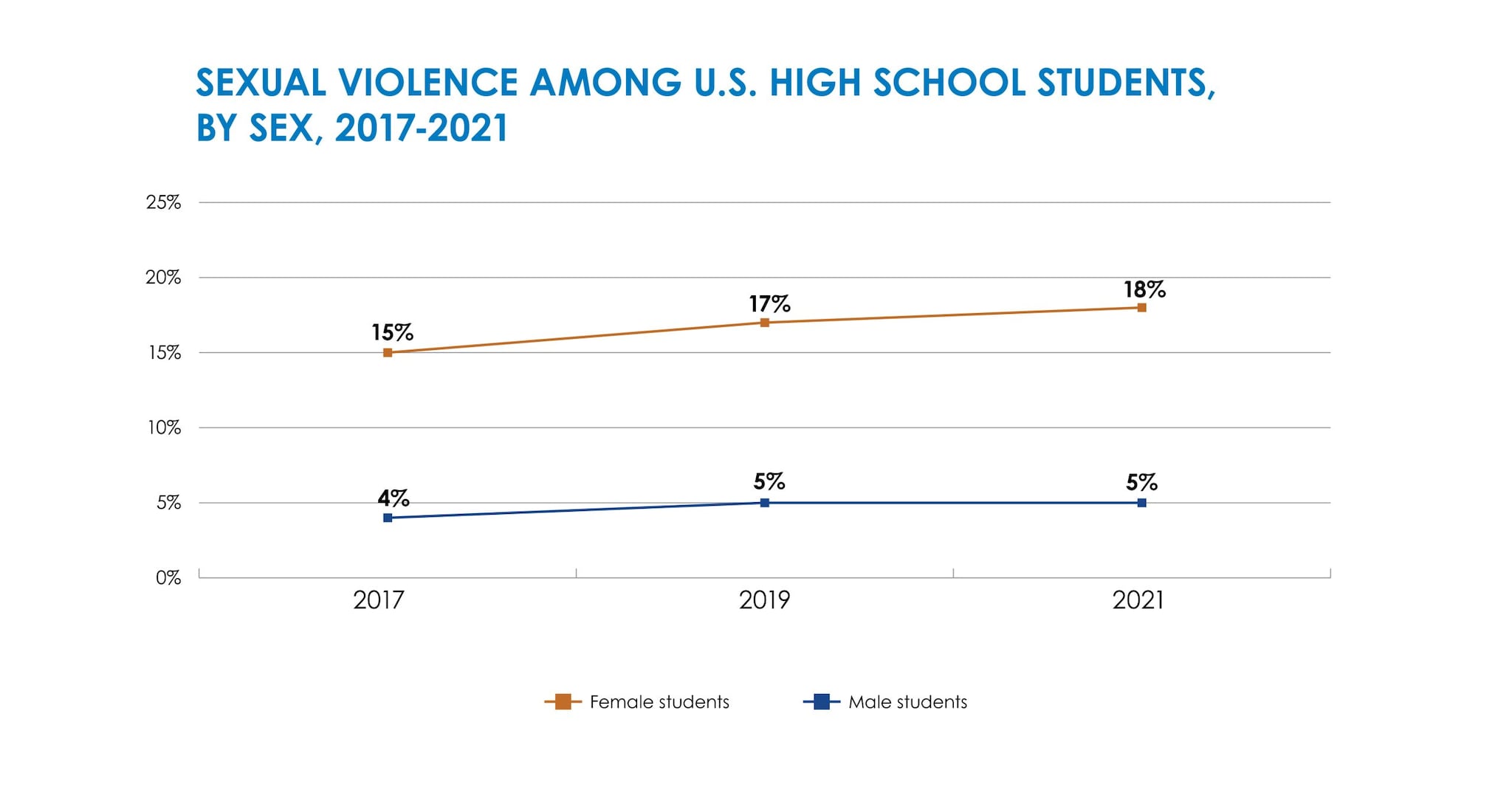
Sexual Violence Among U.S. High School Students, By Sex, 2017-2021
More than 1 in 10 teen girls reported they had ever been forced to have sex—up 27% since 2019 and the first increase since CDC began monitoring this measure.
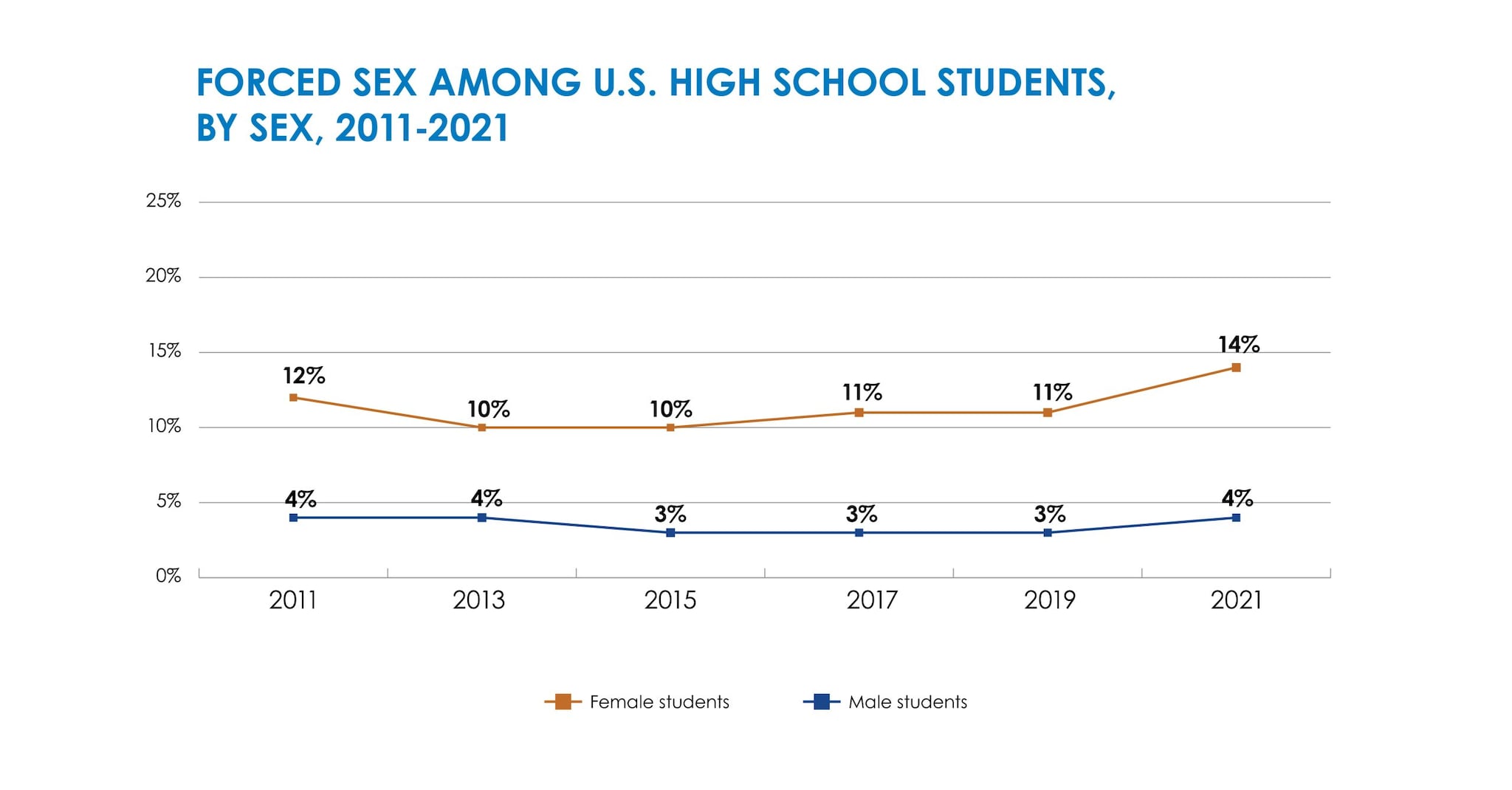
Forced Sex Among U.S. High School Students, By Sex, 2011-2021
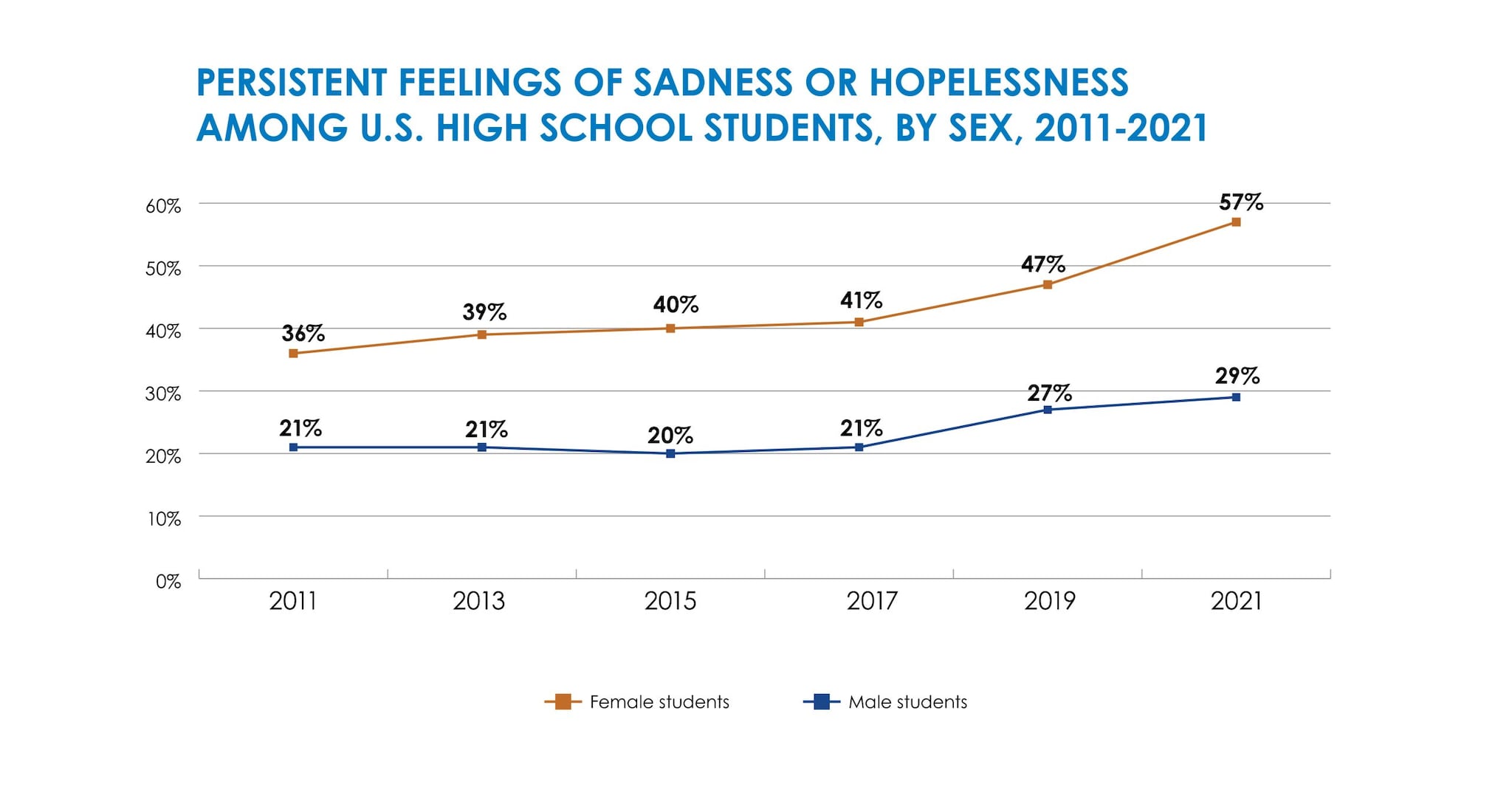
Persistent Feelings of Sadness or Hopelessness Among U.S. High School Students, By Sex, 2011-2021
3 in 5 girls felt persistently sad and hopeless, a marker for depressive symptoms, in 2021, up nearly 60% from 2011.
A combination of complex factors can place young people at high risk for suicide, depression, substance use disorder, poor academic performance, and other severe consequences.
More than 1 in 4 girls reported they seriously considered attempting suicide in 2021, up nearly 60% from 2011. More than 1 in 10 girls reported they attempted suicide in 2021, up 30% from a decade ago. Alcohol use is also higher among girls than boys.
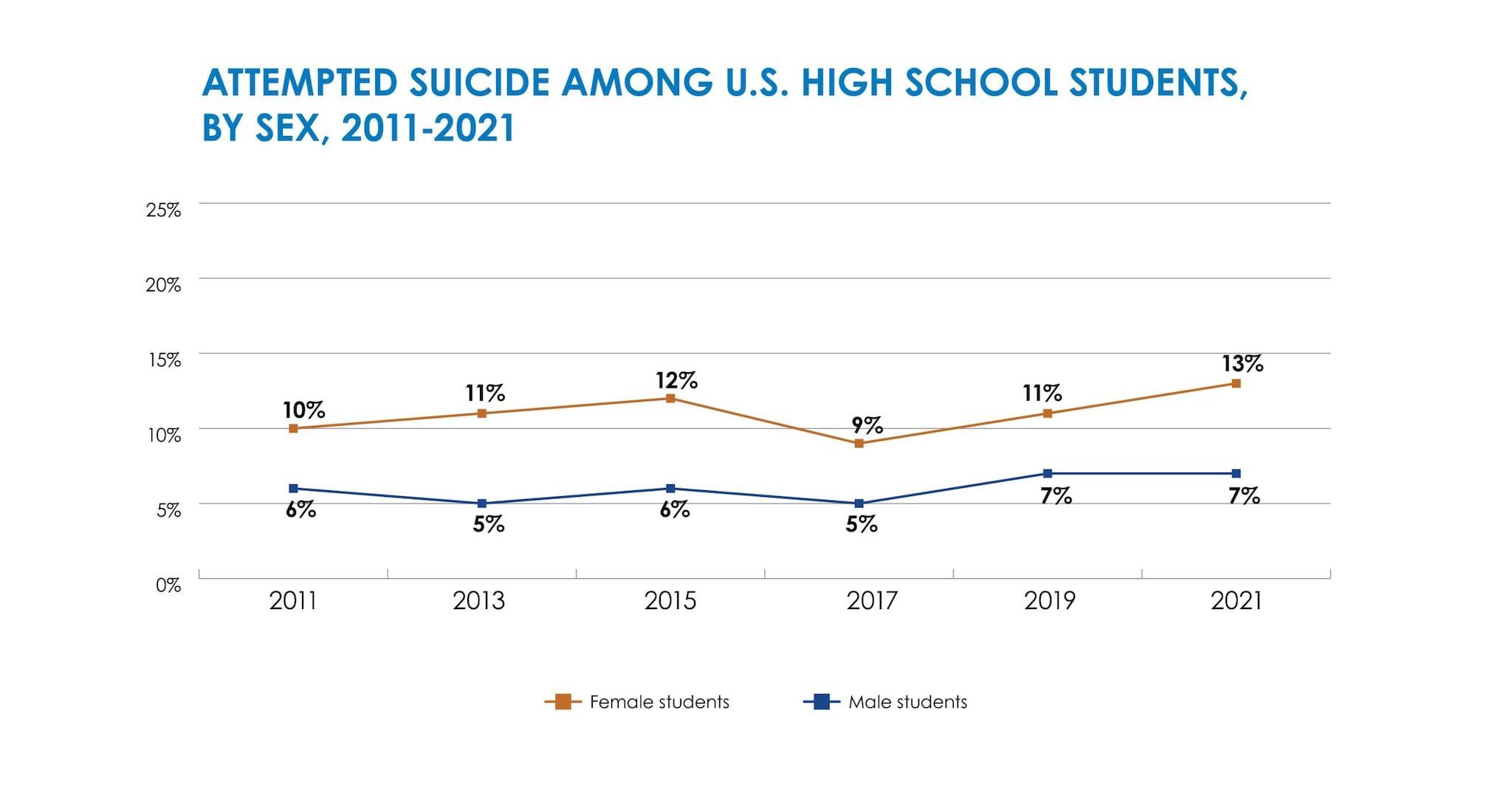
Attempted Suicide Among U.S. High School Students, By Sex, 2011-2021
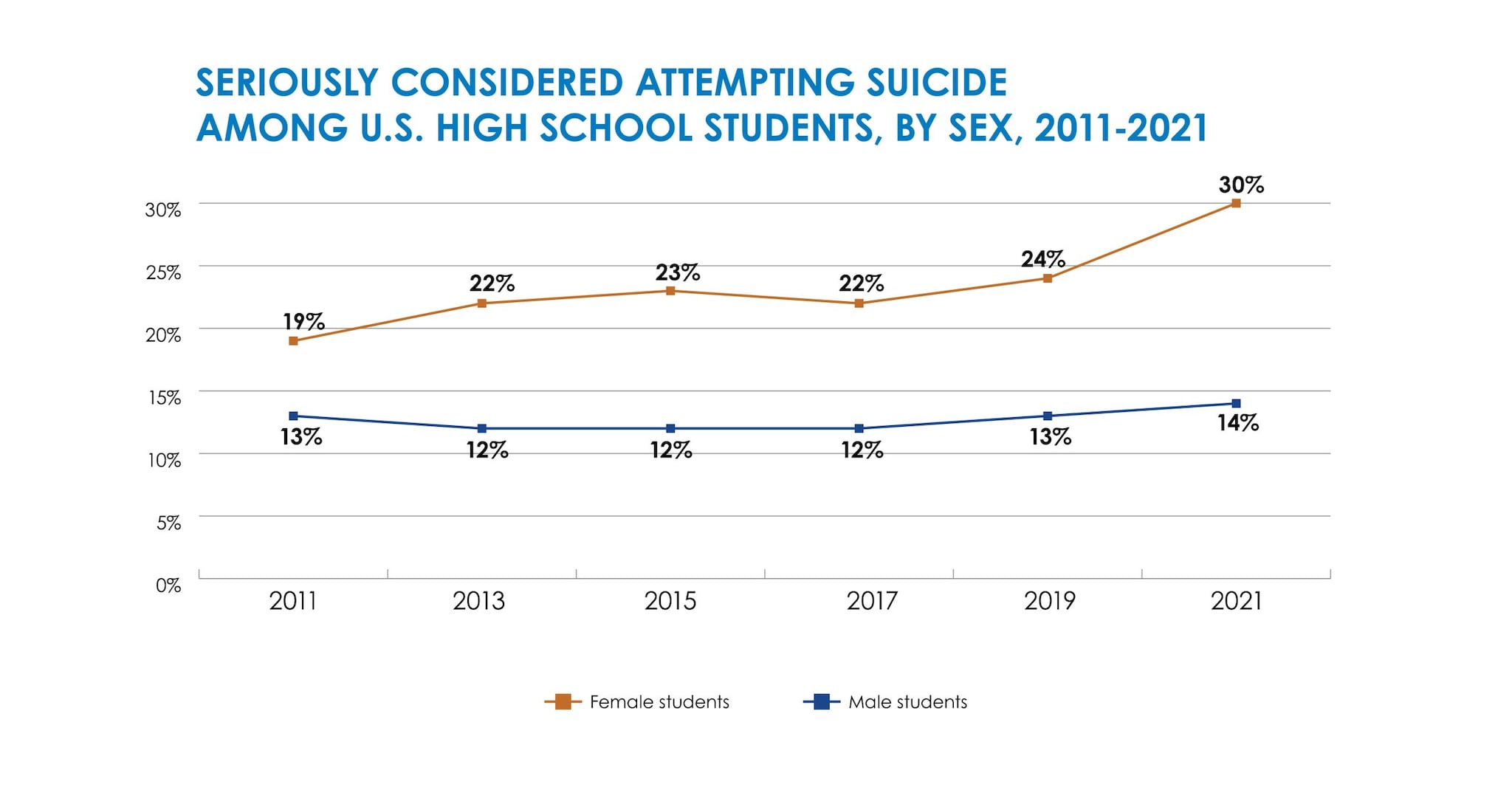
Seriously Considered Attempting Suicide Among U.S. High School Students, By Sex, 2011-2021
LGBQ+ Teens
A combination of complex factors can place LGBTQ+ youth at high risk for violence victimization, suicide risk, and other severe outcomes. In 2021[1], lesbian, gay, bisexual, and questioning (LGBQ+) youth were substantially more likely to have experienced all forms of violence and had worse mental health outcomes than their heterosexual peers. The 2021 YRBS survey did not ask about gender identity, so data for transgender students are not available. Previous research has shown that transgender young people experience greater levels of violence, more stigma, and are more likely to have mental health problems and suicidal thoughts and behaviors than the rest of their peers.
In 2021, more than 1 in 10 LGBQ+ students did not go to school because of safety concerns; nearly 1 in 4 experienced sexual violence, and nearly 1 in 4 were bullied at school.
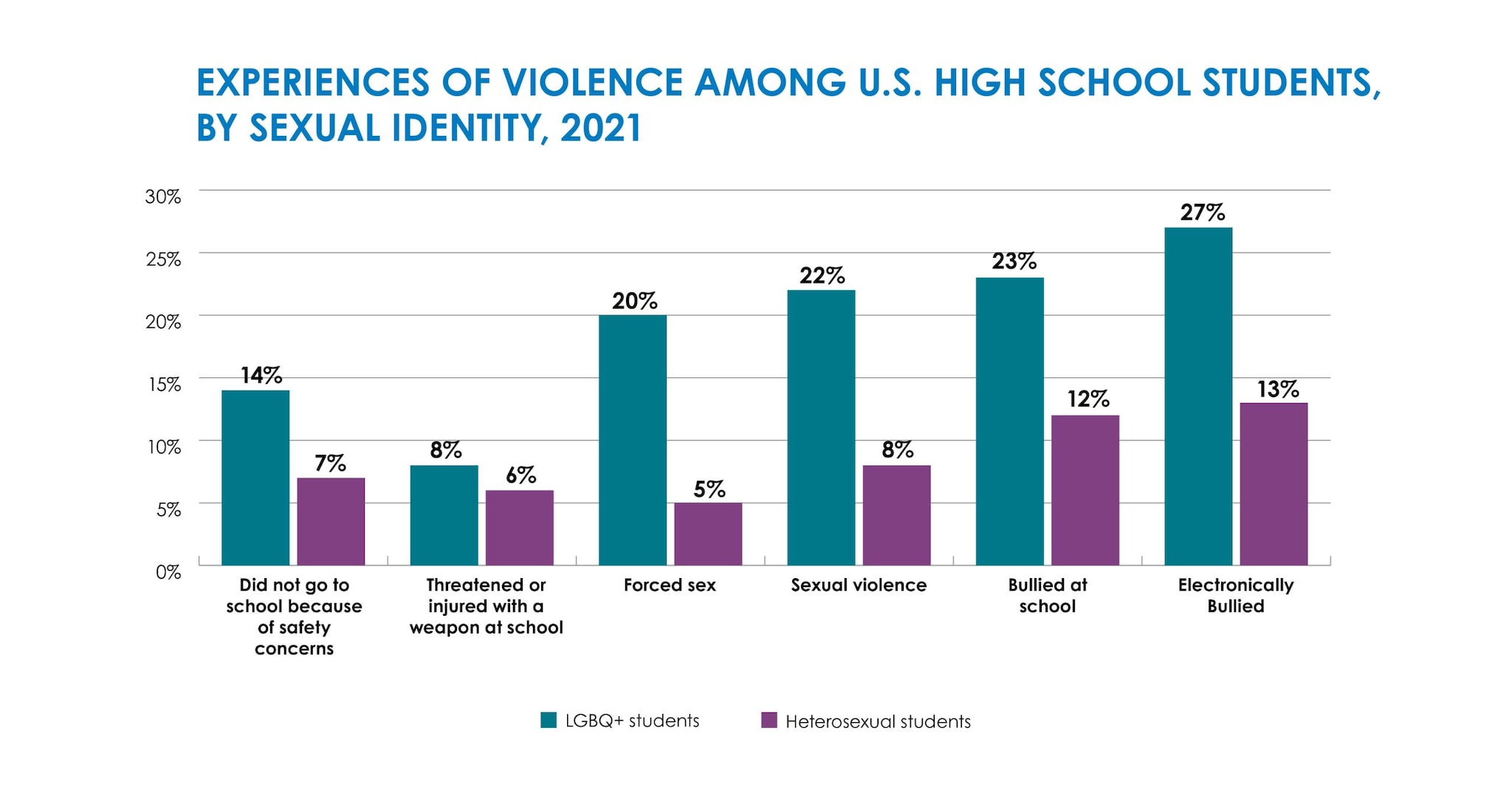
Experiences of Violence Among U.S. High School Students, By Sexual Identity, 2021
In 2021, almost half of LGBQ+ students seriously considered attempting suicide, nearly 1 in 4 attempted suicide, and nearly 3 in 4 reported persistent feelings of sadness or hopelessness.
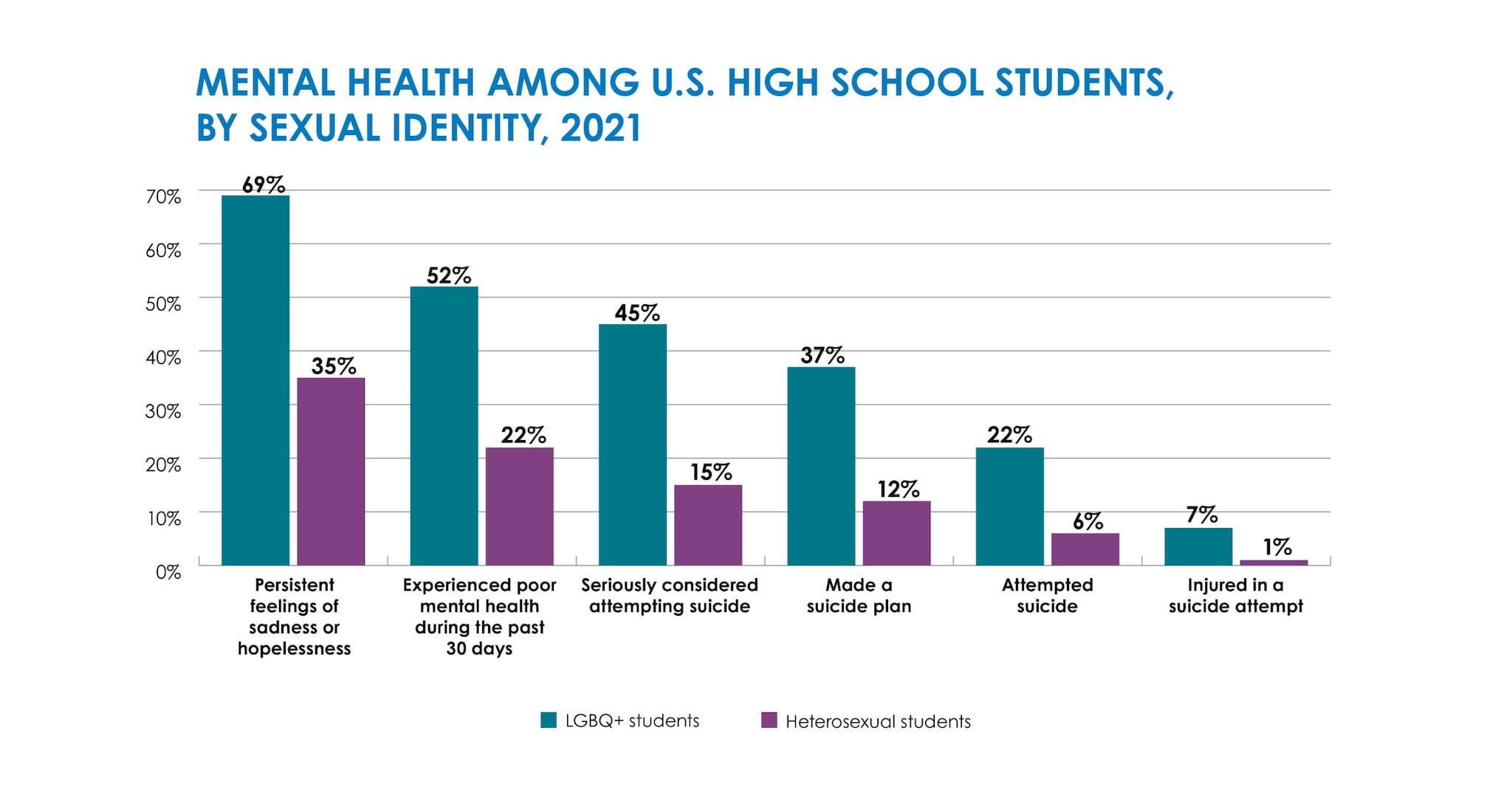
Mental Health Among U.S. High School Students, By Sexual Identity, 2021
In 2021, 1 in 5 LGBQ+ students reported having ever used illicit drugs.
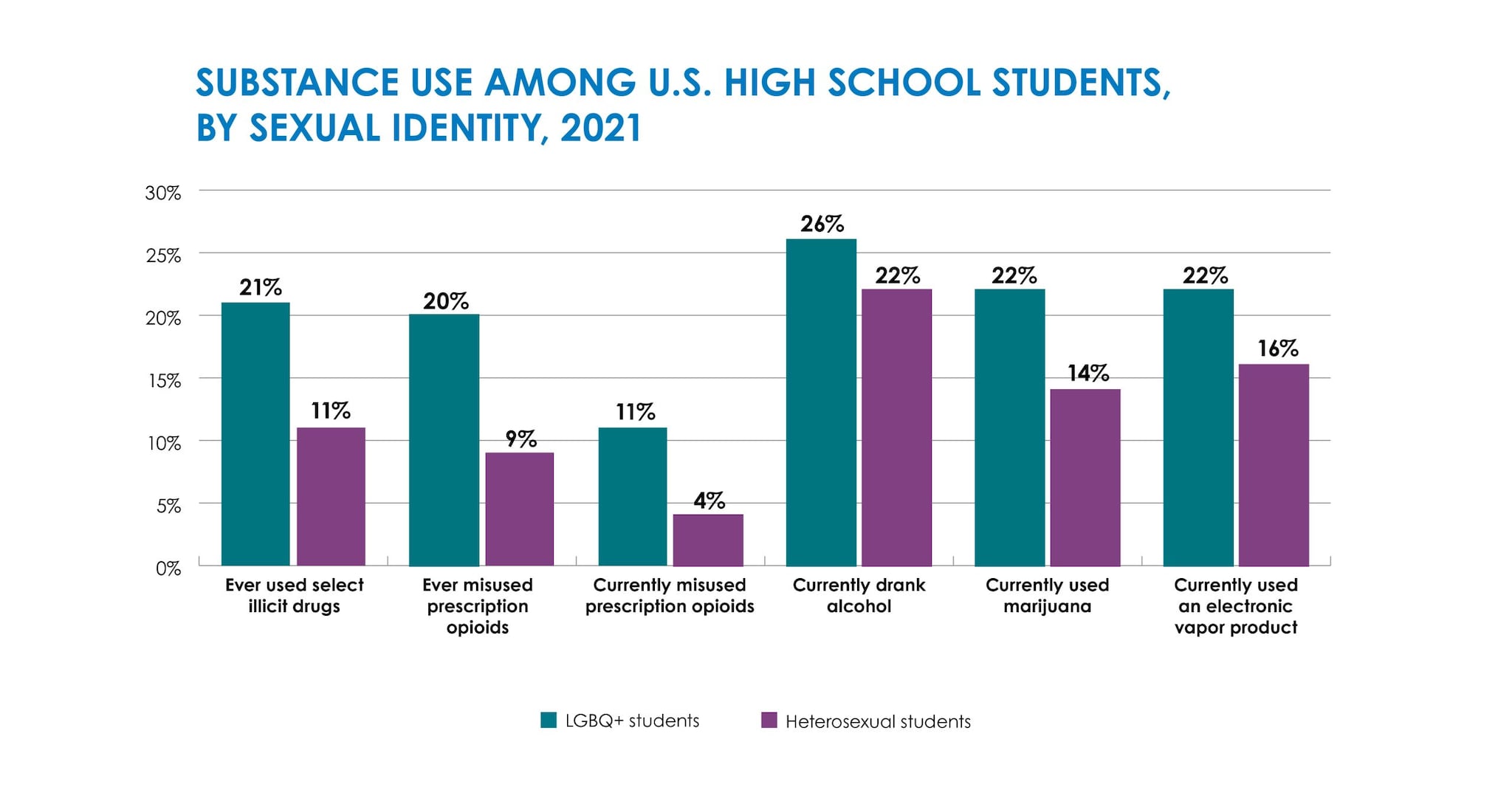
Substance Use Among U.S. High School Students, By Sexual Identity, 2021
Three key strategies to improve youth health and well-being
Young people in the U.S. are collectively experiencing a level of distress that calls for action. This report focused on a select set of YRBS questions that represent leading indicators of health and well-being for young people—and that share a common set of factors that can be enabled through schools to protect young people from these threats.
While the primary goal of schools is academic learning, they also play a critical role in shaping mental, physical, and social growth. More than 95% of children and adolescents in the U.S. spend much of their daily lives in school, providing a considerable opportunity to foster the knowledge, skills and support needed to help prevent and reduce the negative impact of violence and other trauma and improve mental health. CDC has identified and supports a range of evidence-based activities that can make a profound difference in the lives of teens with a relatively small infusion of support to our schools.
Supporting schools in efforts to reverse these negative trends and ensure that youth have the support they need to be healthy and thrive will take time, partnership, and resources. Supporting schools in efforts to reverse these negative trends and ensure that youth have the support they need to be healthy and thrive will require partnership. The following actions can help ensure success.
- Increasing the sense among all students that they are cared for, supported, and belong at school. The proven health benefits of this approach, called “school connectedness,” are well demonstrated and can last well beyond their teenage years. However, youth who are racial and ethnic minorities, experience racism, and who identify as LGBTQ+ often feel less connected at school. Effective programs include approaches like providing safe and trusted adults such as mentors or trained teachers and connecting teens to their peers and communities through clubs and community outreach. These programs help kids know they matter and are not alone.
- Increasing access to needed health services, including mental health and substance use prevention services, whether provided on-site or through connecting youth and families to community-based sources of care.
- Implementing quality health education that is medically accurate, developmentally appropriate, culturally and LGBTQ+ inclusive, and grounded in science can help prevent violence and reduce mental health challenges by equipping teens with essential knowledge and skills such as negotiating sexual consent, managing emotions, and recognizing and asking for the help they need.
CDC’s evidence-based What Works in Schools program has demonstrated impact on key health behaviors and experiences that affect the nation’s youth. The program supports school districts across the country in making school environments safer and more supportive—with a strong focus on improving school connectedness; connecting young people and their families to needed services; and implementing quality health education. Participating schools have seen improvements in a wide range of health behaviors, including sexual behaviors, substance use, and sexual violence.
Additional Resources
For the full report, visit CDC Youth Risk Behavior Survey, Data Summary & Trends Report, 2011-2021
For more information on suicide prevention, visit: www.cdc.gov/suicide.
988 Suicide Prevention
Contact the 988 Suicide & Crisis Lifeline if you are experiencing mental health-related distress or are worried about a loved one who may need crisis support. Call or text 988. Chat at 988lifeline.org. Connect with a trained crisis counselor. 988 is confidential, free, and available 24/7/365. Visit the 988 Suicide and Crisis Lifeline for more information at 988lifeline.org.
